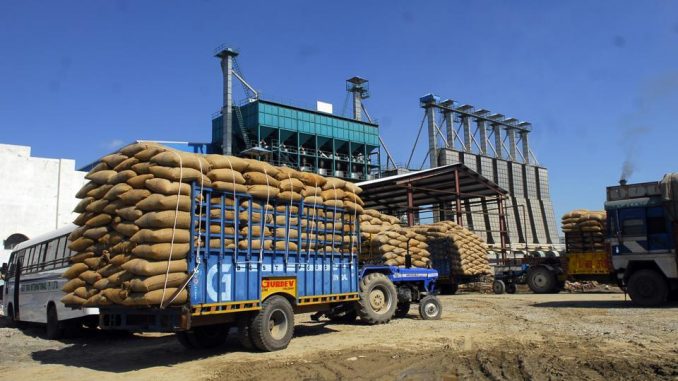
By Zia Haq
Government plans to look into changing the current policy of using export restrictions on food items to prevent domestic inflation, which is leading to losses.
New Delhi: Bhupinder Pal Singh, a farmer from Babain, a village in Haryana’s Kurukshetra district, was unable to sell a third of his 4,400 quintals (1 quintal is a 100 kilogrammes) of potato harvest in May 2017. The unsold produce soon turned into heaps of rotten slush.
Singh says he sold 40 quintals for Rs 2,306 to a local trader, meaning he got Rs 57.65 a quintal. “It was the worst year as long as I can remember,” he says.
The potato crisis of 2017 had to do with a knee-jerk farm trade policy that tends to clamp down on exports at the slightest hint of rising consumer prices. In June 2014, to rein in potato prices, the government imposed a minimum export price on potatoes, put the commodity under the Essential Commodities Act and also allowed duty-free imports. This choked off exports and caused domestic prices to crash amid a potato glut of 48 million tonnes.
To avoid such disasters, India is now looking to setup a national agriculture trade policy, similar to the country’s three-year foreign trade policies. The farm exports policy will be geared towards promoting exports rather than them being used as a tool to control domestic prices, a person familiar with the development said.
Last month, the commerce ministry unveiled a draft national agriculture export policy in step with the government’s target of doubling farmers’ incomes. It has sought to boost agricultural exports from $30 billion currently to nearly $60 billion by 2022.
The government may form “a trade perspective over a 5-10 year period” and undertake a “mid-term review of agriculture trade policy…” the official said.
The agriculture ministry, along with APEDA, has identified 50 farm export clusters, the official said. The Centre will soon hold consultations with states to standardise taxes in local markets for export-oriented produce, he said. For instance, local market taxes vary widely for basmati rice, a key export commodity. It is 4% in Punjab and Haryana and 1.6% in Rajasthan. For pulses, the fees are 1% in Maharashtra and 2.5% in UP.
India’s agricultural exports grew five times from about $8.7 billion in 2004-05 to $42.6 billion during 2013-14. This however fell to $33 billion in 2016-17. Farm economist Ashok Gulati says knee-jerk export restrictions on food items to prevent domestic inflation have deprived farmers of higher prices in the global market. A paper by Gulati, Infosys chair professor and Shweta Saini, who works with policy think tank ICRIER, analysed 10-year data to show that India’s agri trade policy had a “pro-consumer bias”. The government’s Doubling Farmers’ Income also says India’s exports policy “does not promote agricultural trade but is mainly used to control prices in the domestic market”. According to the new draft policy, a three-year ban on non-basmati rice exports during 2008-11 amid a rice glut led to a “notional loss of $5.6 billion”.
Source: Hindustan Times

Leave a Reply